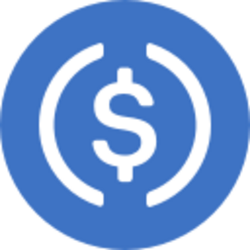The United States consumer prices increased in June to its highest level in five months, amid higher costs for some goods, which suggests that tariffs are beginning to have an impact on inflation and potentially keeps the Federal Reserve on the sidelines until September.
Despite the rebound in the consumer price index reported by the Labor Department on Tuesday, the underlying inflation remained moderate last month, with the prices of the lowest new and used motor vehicles in relation to May.
Services such as air rates, as well as hotels and motels rooms, were also cheaper in June. The weakening of demand as consumers take refuge is limiting the price increases of these services, a trend that, if maintained, could relieve the concerns of a general increase in inflationary pressures.
“While today’s publication today showed some early tariff impact signals, in general the underlying inflation remained moderate,” said Kay Haigh, global co -director of fixed income solutions and liquidity of Goldman Sachs Asset Management. “However, pressures on prices are expected to be strengthened during the summer and the reports of the July and August CPI will be important obstacles to overcome. At the moment, the Fed remains in way of waiting and seeing.”
The CPI increased 0.3% last month after rising 0.1% in May, according to the labor statistics office of the Labor Department. That increase was the largest since January, and also reflected higher rental costs. Gasoline prices recounted 1% after four consecutive monthly falls.
Food prices rose 0.3%, matching the May increase, while supermarket prices also advanced 0.3%, driven by a 1.4% increase in non -alcoholic beverages costs and a 2.2% increase in coffee prices. Fruits and vegetables cost 0.9% more, while beef prices rise 2%. But the eggs were 7.4% cheaper as the avian flu outbreak decreased. The cost of food consumed away from home rose 0.4%.
In the 12 months until June, the CPI advanced 2.7% after rising 2.4% in May. The economists surveyed by Reuters had predicted that the CPI would rise 0.3% and 2.6% year -on -year.
The Fed tracks different inflation measures for its 2%target. The Central Bank is expected to leave its reference interest rate to one day in the range of 4.25% -4.50% at a monetary policy meeting at the end of this month.
You may be interested: They calculate that USA Average Tariff For Mexico rises to 14% in August
EU consumer prices rebound in June
The minutes of the Central Bank meeting of June 17 and 18, which were published last week, showed that only “a couple” of officials said they felt that the rates could fall as soon as in the meeting of July 29 and 30.
The dollar operated with few changes in front of a basket of coins. The yields of the US Treasury bonds were mixed.
IPC inflation readings were low between February and May, which led President Donald Trump to demand the US Central Bank to reduce indebted costs. Economists said inflation has taken to respond to the wide import tariffs that Trump announced in April because companies continued to sell accumulated stocks before tariffs came into force.
Trump announced last week that the highest tariffs would take effect on August 1 for imports from a variety of countries, including Mexico, Japan, Canada and Brazil, and the European Union, raising the effective tariff rate.
Economists expect the highest prices of goods to prevail during the summer. Excluding the volatile components of food and energy, the CPI rose 0.2% in June after rising 0.1% in the previous month. In the 12 months until June, the so -called IPC underlying inflation increased by 2.9% after rising 2.8% for three consecutive months.
The prices of the furniture and supplies for the home fired 1% after rising 0.3% in May, while the prices of the appliances rose 1.9%, while the cost of clothing rebounded 0.4%. The prices of sporting articles accelerated 1.4%, while toys rose 1.8%.
But they were partially compensated for a 0.7% drop in the prices of used cars and trucks. The prices of new motor vehicles fell 0.3% per second consecutive month. The underlying food prices rose 0.2% after being unchanged in May.
The equivalent rental of the owners of the main residence increased by 0.3%, but the cost of hotel rooms and motel decreased by 3.6%. Air rates fell 0.1%. The costs of the services, excluding energy services, increased 0.3% after winning 0.2% in May.
Goldman Sachs provides monthly increases in the underlying inflation of the CPI between 0.3% and 0.4% in the coming months, which reflects the increases related to tariffs in the prices of consumer electronics, cars and clothing. The investment bank awaits a limited short -term impact on the underlying inflation of services.
With Reuters information.
Subscribe to our YouTube channel and do not miss our content











































